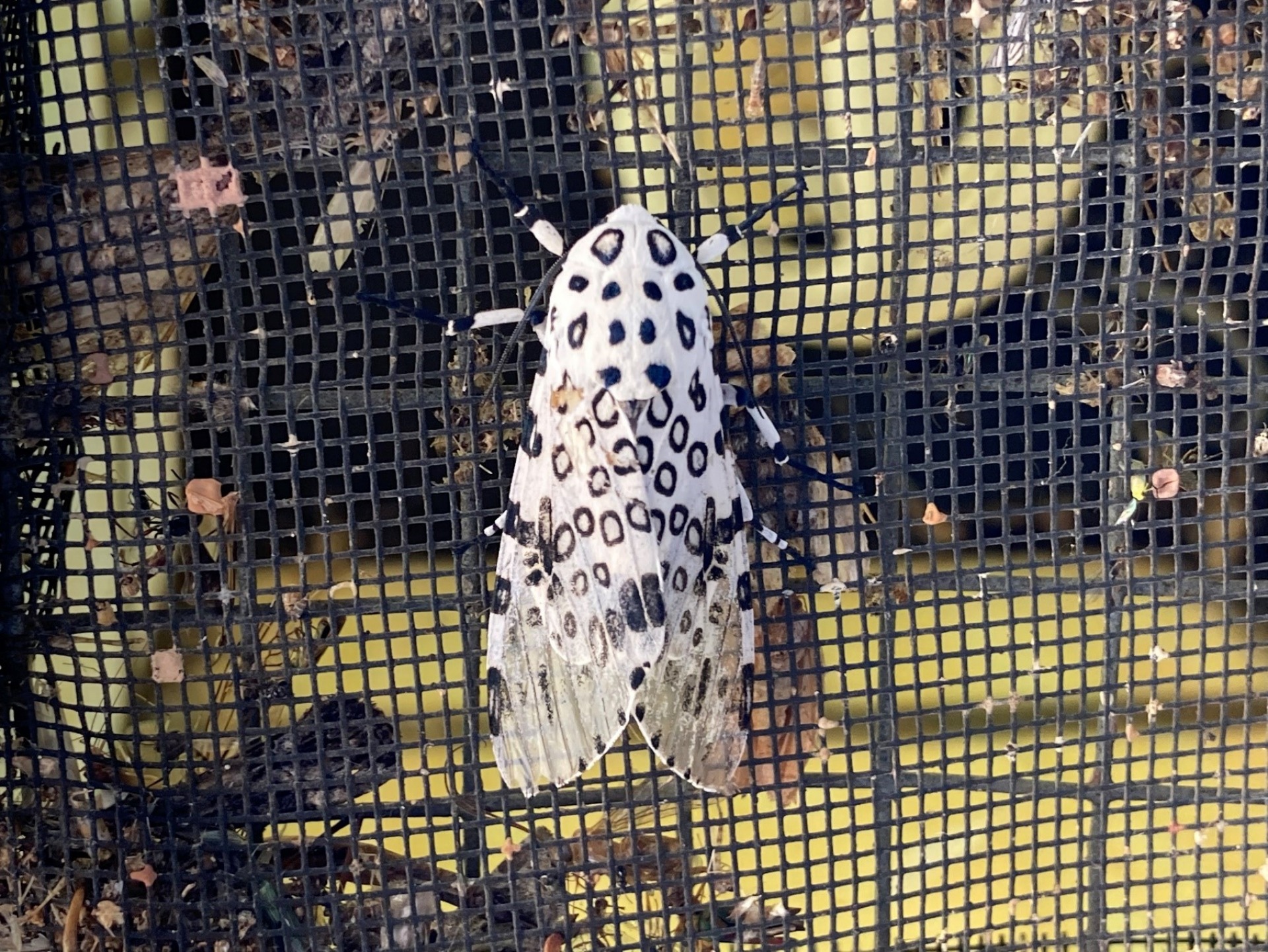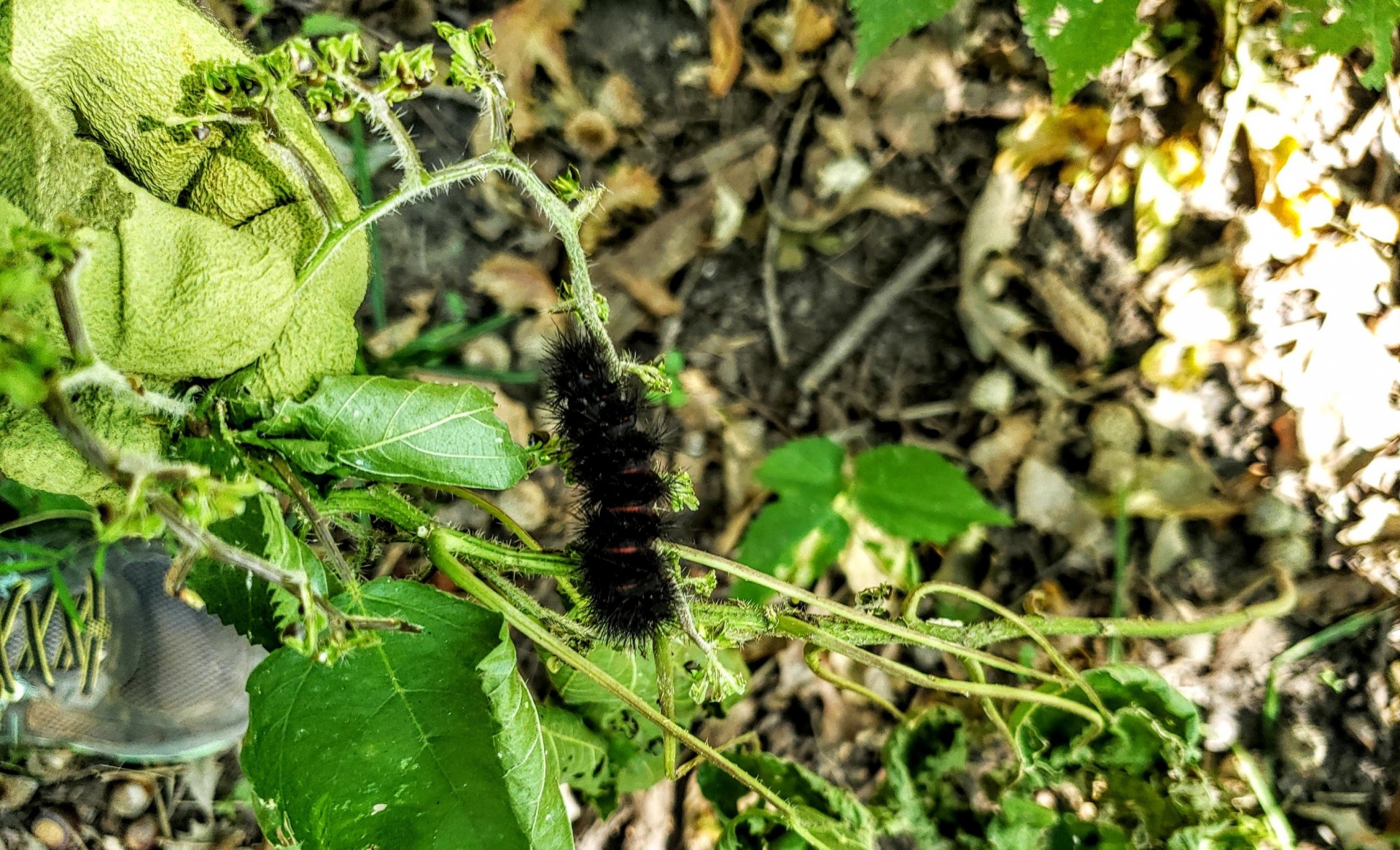These popular topics are heating up. Explore today's most viewed pages.
The Giant or Great Spotted Leopard Moth (Hypercompe scribonia) is found throughout North America, it's a member of the family Erebidae and in the subfamily Arctiinae, also known as the Tiger Moth family. Their bodies are a bright white with bold black spots resembling those of a leopard. Some spots on adults are a deep blue that appear to be black, until you get close enough to see the blue. The undersides of the moths are that same deep blue with orange lines. The legs are striped with white and the deep blue that appears to be black.

Giant Leopard Moths are a rather large species of moth with older individuals robust enough to sit comfortably in an adult person’s palm. There is a clear sexual dimorphism in this species, with male moths being nearly two times the size of the females. The male moths also have lighter and thinner spots than the females.
The larval stage of the Giant Leopard Moth can be found in the spring & fall. The caterpillars, known as giant woolly bear caterpillars, have segments that are dark brown to black and orange to red. Their body is covered in black setae, that look like stiff spines. These setae are used as a defense mechanism. Although the spines are not used to sting, they can prick the skin, causing pain for some. These caterpillars overwinter in leaf litter and under logs in the fall. They feed on many plants, including violets and willows.
